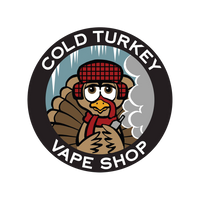
In the grand scheme of things, vaping is still a relatively new way of consuming nicotine. As such, new regulations aimed at protecting consumers are being introduced regularly. In early 2021, new regulations went into force aimed at reducing the risk of harm to children who might come into contact with vaping products. These regulations are in accordance with the Canada Consumer Product Safety Act.
The rules we’re going to discuss today are part of the Vaping Products Labelling and Packaging Regulations (VPLPR). The VPLPR was introduced in late 2019, and the first wave of regulations came into force in July 2020. The second wave of regulations was set to go into force in January 2021, but the Government is allowing manufacturers some extra time due to COVID-19.
This second wave of regulations introduced new requirements for child-resistant containers (CRCs). Let’s take a closer look at what these regulations are, what products they impact, and how they might affect consumers.
CRC Requirements & Guidelines 2021
You can find a detailed list of requirements and guidelines for CRCs in the Government of Canada’s Industry Guide to Vaping Products - more specifically, in section 4.2.4 (Child-Resistant Containers). Note that these regulations include information about making child-resistant e-juice containers; these regulations have been active for some time.
The regulations we’re discussing are those that affect vaping devices that can contain juice. We’ll go over a list of examples of such products in the next section, but they include everything from tanks to disposable vapes.
When the regulations go into full force, all vaping products will need to be CRC compliant or CRC certified. To meet the requirements, devices will need to be locked in some way which makes them difficult to open or close for children. These devices will also need to come with instructions on how to open and close them.
Exactly how the devices will lock and unlock depends, of course, on the childproofing system being used. We’re sure you’ve encountered CRCs before, be they for over-the-counter drugs or even for e-juice. You can probably appreciate that there are a variety of ways you can go about childproofing.
What products are impacted by the CRC requirement?
Any products that are made to contain e-juice can be affected by the requirements. It’s worth noting that there are different requirements for tobacco products and cannabis products. These regulations are all linked to e-cigarettes and other vaping products.
Broadly speaking, products can either be CRC compliant or CRC certified.
CRC certified devices
These are devices that can be refilled - as such, they need to be child-resistant even after they are opened. Devices that must be CRC certified include:
- Tanks
- Open pod systems
- Cartridges
- Pods
- Atomizers/Clearomizers
Basically, if you’re using it to hold juice, and it’s not a disposable device, it’s very likely it will need to be CRC certified.
CRC compliant devices
These are disposable devices - you’re not going to refill them. As such, they need to be housed in CRCs until they are opened - once opened, however, they are no longer required to be CRC, as they are not supposed to be refilled. They are accompanied by a warning that the device is not child-resistant once opened, and that the device must be fully emptied before discarding it.
Devices that have to be CRC compliant include any and all disposable e-juice containers, as well as disposable vapes.
What does this mean for consumers?
These new regulations may limit the number of manufacturers that are willing to sell vaping devices in Canada. For some manufacturers, creating an entirely new type of vape to comply with safety regulations isn’t worth the cost.
This shouldn’t mean that you won’t be able to find e-cigarettes or pod systems anywhere. The biggest manufacturers will continue to create products for the Canadian market.
Prices may increase slightly as the costs for manufacturers increase. You can also expect opening devices to be a bit trickier - they’re child-resistant now, after all. You might also be able to find some great deals at local vape shops. Most of us are trying to sell through old stock so all of the devices we offer in the future will all have CRCs.
Manitoba vaping regulations
What we’ve discussed so far are federal regulations - that means they apply in every province and territory. Manitoba’s regulations remain the same - no vaping in indoor public places, no vaping for people under the age of 18, and limits on how vaping can be advertised.
That, more or less, covers all of the regulatory changes you need to be aware of. We’ll continue to sell vapes, vaping devices, and e-juice at our Winnipeg vape stores. If you have any questions, don’t hesitate to contact us.

